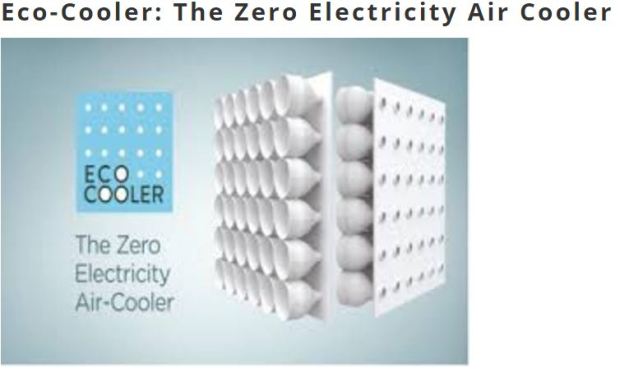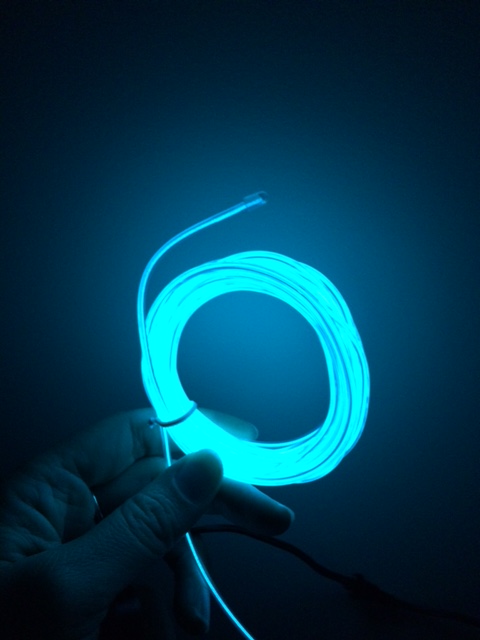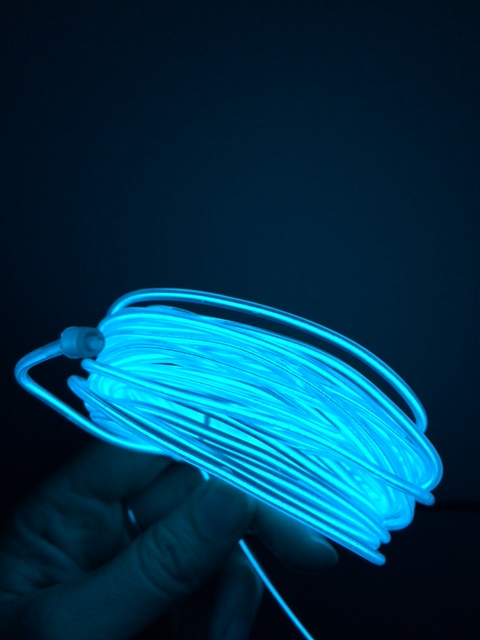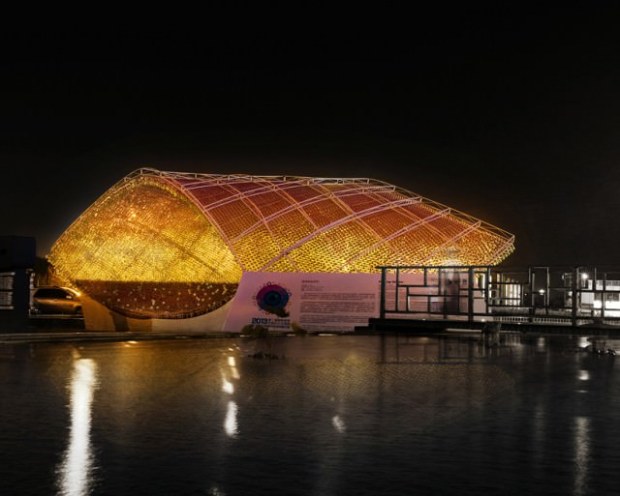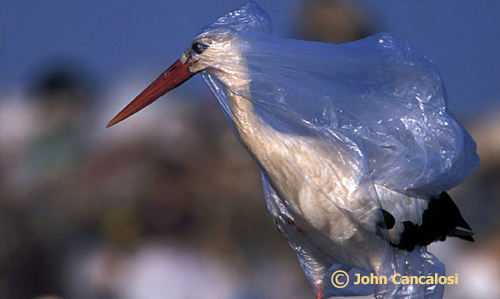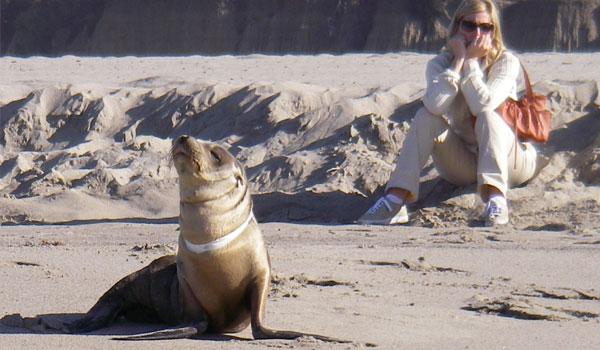
(Image retrieved from Skyspace | University of Texas – James Turrell. Accessed , 2016. http://turrell.utexas.edu/.)
James Turrell makes beautiful light works often on a very large scale. I find his works inspirational.
Turrell says of himself, “I am known as a light artist, but rather than be someone who depicted light or painted light in some way, I wanted to have the work to be light.” (Quote from James Turrell ,” James Turrell Exhibition Website, accessed May, 2016, http://web.guggenheim.org/exhibitions/turrell/.)
James Turrell created Aten Reign (see below) specifically for the Guggenheim Museum in 2013. It was designed for this site, to compliment the space it was to inhabit. The space is filled with light, it becomes an optical experience invoking a response in the viewer. The site and the installation work are cohesive, they work together as complimentary partners. It is set up in the rotunda, where natural light is filtered down through the top of the cone and mixed with the light that the LED’s generate. Aten Reign is constructed of layers of cones in an elliptical shape, suspended from the ceiling, that start about 25 feet above the ground and occupies the space up to the rotunda. The LED lights shine upwards and are controlled by a programme, which was developed by a team at the Guggenheim Museum following instructions from Turrell.
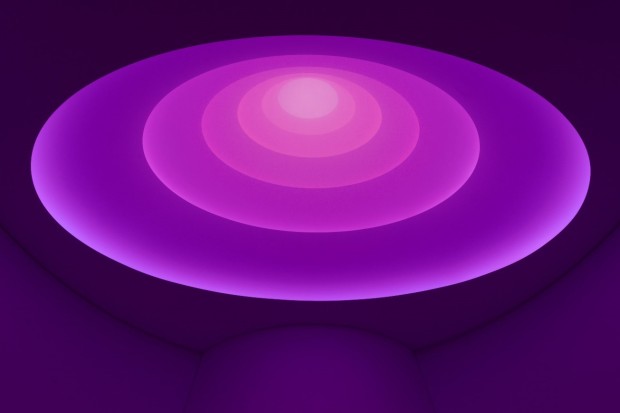
James Turrell, Aten Reign (2013), Guggenheim Museum.
(Image retrieved Turrell, James. “Aten Reign.” n.d. Guggenheim Museum. http://www.forbes.com/sites/jonathonkeats/2013/09/17/believe-your-eyes-at-lacma-and-the-guggenheim-artist-james-turrell-will-make-you-hallucinate-with-light/#1c5dafd02174)
Turrell uses light to help shape our experience, to make us aware of our senses and the power light can have. His work is inspiring especially since he works on such a large scale. I will be eagerly awaiting the completion of the Roden Crater Project, where Turrell is transforming an extinct volcanic cone he acquired in 1979 into a world of light art and natural observatories.
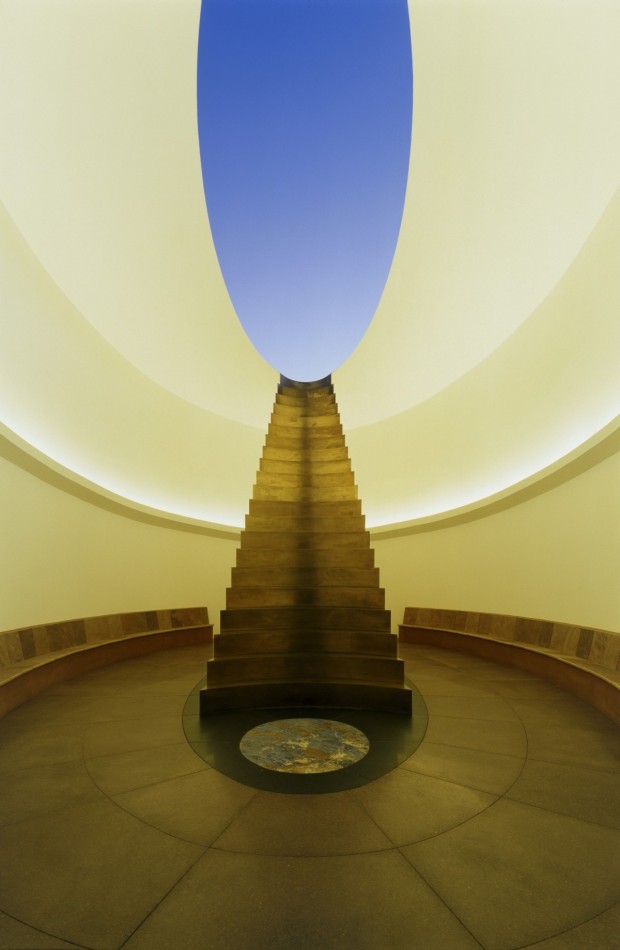
Roden Crater, East Portal 2010.
(Image retrieved from Holzherr, Florian.
“Turrell has created special rooms for the sunrise, sunset and the moon, providing for astronomical events for the next two thousand years. However, only very few people will have the chance to encounter these spectacular moments due to the small numbers of visitors allowed per day and the rare nature of celestial constellations, like the 18 year cycle for the moon appearing in the center of the crater tunnel. Concurrently, a camera obscura effect will cast a moon image on the back wall of the tunnel. “( Quote “Light Matters: Seeing the Light with James Turrell.” ArchDaily. Accessed , 2016. http://www.archdaily.com/380911/light-matters-seeing-the-light-with-james-turrell.)
References
“”Aten Reign” at the Guggenheim and James Turrell’s Skyspaces.” YouTube. n.d. https://www.youtube.com/watch?v=Wih1K71hYlk.
“BeautifulNow is Beautiful Now | The Art of Orange Light Now.” BeautifulNow is Beautiful Now. Accessed May, 2016. http://beautifulnow.is/bnow/the-art-of-orange-light-now.
“Forbes Welcome.” Forbes Welcome. Accessed May, 2016. http://www.forbes.com/sites/jonathonkeats/2013/09/17/believe-your-eyes-at-lacma-and-the-guggenheim-artist-james-turrell-will-make-you-hallucinate-with-light/#1c5dafd0217
Skyspace | University of Texas – James Turrell. Accessed , 2016. http://turrell.utexas.edu/.
“Light Matters: Seeing the Light with James Turrell.” ArchDaily. Accessed , 2016. http://www.archdaily.com/380911/light-matters-seeing-the-light-with-james-turrell
